I’ve always been fascinated with the ocean.
Deep and mysterious, similar to an AdWords account when you first start learning about it.
After my first scuba diving experience off the coast of Catalina Island, I was hooked (no fish pun intended).
Certain that I would actually become a Marine Biologist, I enrolled in all the college classes that would put me on the path to swim with whale sharks and sea turtles...

But after taking my first Chemistry class, my dreams crumbled.
And I decided to follow the path of marketing and design instead, and start KlientBoost (the agency’s blog post that you’re currently reading).
So with my obsession of diving deep into the oceans, comes my obsession for diving deep into the topics of paid search, social, display, and video.
Which brings us to today’s topic that no one seems to take advantage of:
Understanding multi intent keywords and their huge conversion potential.
Get brand new Google ad strategies straight to your inbox every week. 23,739 people already are!
What Are Multi Intent Keywords?
Multi intent keywords are keywords that may be producing similar conversion results (if you’re in the lead generation or SaaS space), with similar CPAs and similar conversion rates in your AdWords account.
But when you look at their sales rates (lead turning into a sale, or a SaaS trial user turning into a paid customer), the results are drastically different.
Take a look at this conversion table:
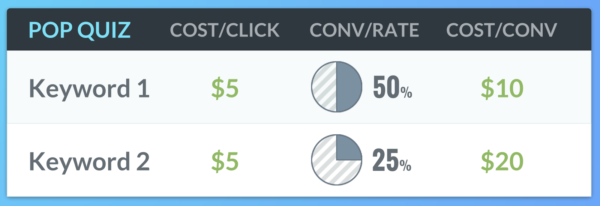
All things being equal, which keyword is performing best?
The one with the lowest cost per conversion (cost/conv), right? Keyword 1.
Now, bring in the closing and sales rates behind those two keywords:

Now Keyword 2 is the winner.
See, when it comes to multi intent keywords, your sales rate and cost per sale help you understand the difference in “sales intent” behind all the keywords you’re bidding on.
If all you have is regular conversion tracking, then you’re selling yourself short.
To give you a better example, consider yourself a business that buys cars from the public.
Inside your AdWords account, you might be bidding on different keywords, like the ones below:
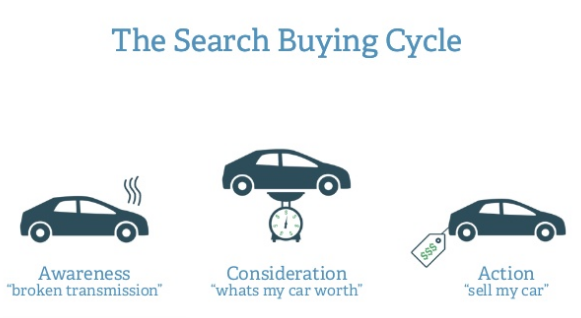
“Broken Transmission” - You know that someone who searches for “broken transmission” might be interested in selling their car, but they’re probably more interested in fixing their car first.
Your landing page in this case could do a good enough job of converting people because it talks about “Selling your car instead of getting it fixed”.
“What's My Car Worth” - If someone searches “what's my car worth”, then you know they’re probably interested in selling, but still figuring out their options.
Your landing page for this keyword could be a multi step landing page that acts as a calculator, but ultimately generates leads.
“Sell My Car” - The iron is hot and you should get to striking. There’s clear intent to sell a car from this search.
Your landing page for this keyword could focus on generating phone calls since it’s in the visitors interest to get an offer for their car as fast as possible.
Another example from a different industry is the “Learn To Code” world.
Consider these three different keywords that a school could bid on:
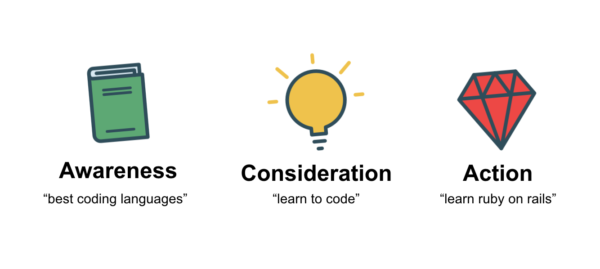
You can quickly see that as you go from left to right, the intent to convert and the intent to buy increases.
This doesn’t mean that you shouldn’t bid on the lower intent keywords.
In fact, that’s not even the point of this post. The point of this post is to show you how to group multi intent keywords, and then take advantage of the opportunity to generate more conversions.
Knowing Which Offers To Create
Because of the fact that multi intent keywords have different search cycles, it’s important to understand that the same conversion path doesn’t guarantee an action (a sale) to occur.
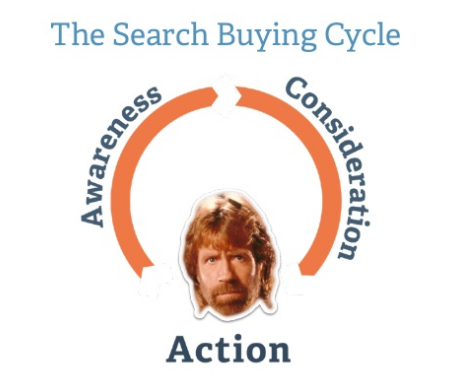
That’s because you need to be able to match the landing page offer (the call to action) with the intent of the visitor.
In other words, your offer needs to match the PPC traffic temperature.
In most cases, this means lowering the threat of what you’re asking them to do, as you understand that certain keywords might bring visitors who are in different stages of the buying cycle.
It also means you can increase the threat of what you’re asking the visitor to do, especially if you’re using a low-intent offer for a high-intent keyword.
Let’s take a look at the coding keywords again:
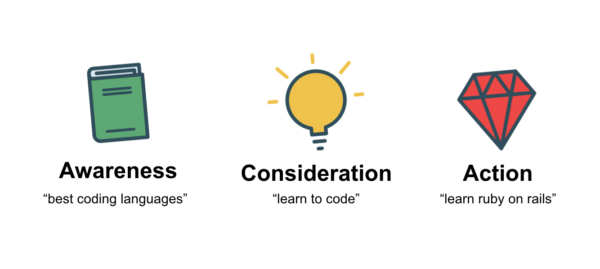
Understanding that someone who searches “best coding languages” might be curious about going to school to learn, but not quite ready to commit; it’s up to you to create an offer that gives them immediate value, in exchange for something like their email address.
This could be a list of the different coding languages, along with explanations as to why they’re ranked the way they are. Here’s an example of how Sitepoint.com does it:
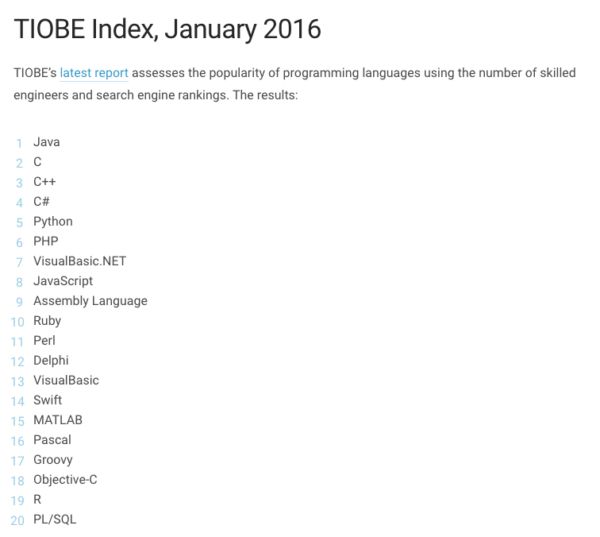
Due to the fact that not many advertisers are bidding on the keyword “best coding languages” (only 1 advertiser, and they weren’t even relevant), it immediately gives you an opportunity to pick some “low-hanging student” fruit where you became the first school that they reacted positively to.
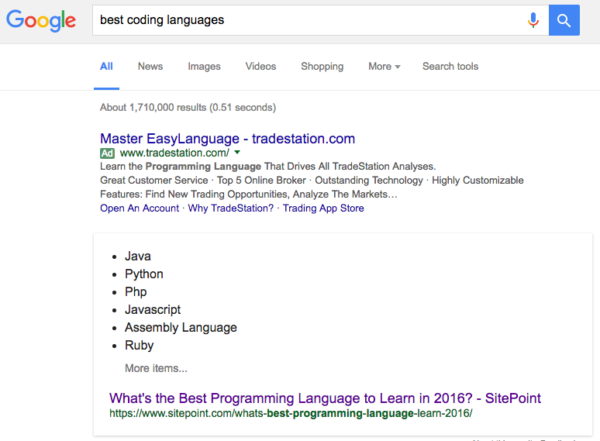
Now, go ahead and create a landing page, turn that blog post into a guide, add in more meat, and give the visitor something they can use.
On to the next multi intent keyword…
If someone is searching “learn to code”, then you know there’s stronger conversion intent than “best coding languages” because of the verb “learn”.
This means that your landing page offer can be more aggressive and more threatening.
It’s also the reason for why there are now six advertisers on Google compared to the measly one, in the previous example.
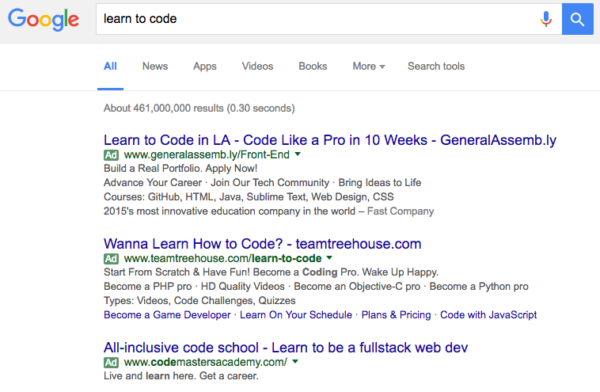
Let’s take a look at the landing page CTA for General Assembly:
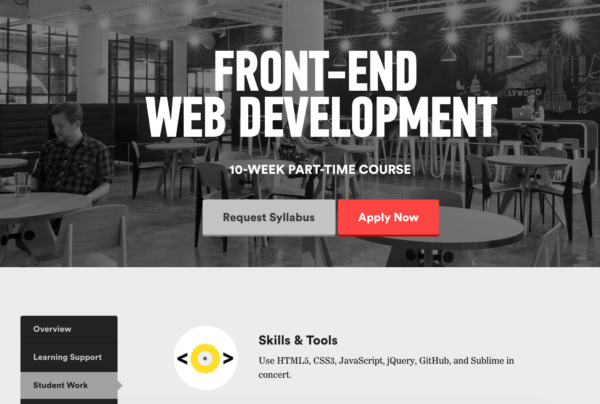
In the two CTAs above, General Assembly makes the mistake of sending me as the visitor to a page about “Front-End Web Development”, when my search term was “learn to code”.
To them, this may be a beginners course that gets them conversions from my search term, but they could potentially be better off by giving a guide outlining the different types of courses that they’re offering.
To give them credit, they do allow me the “Request Syllabus” which shows intent from my end to potentially sign up for the class before I’m willing to “Apply Now”.
This is also a step more threatening than the “best coding languages” guide in the previous multi intent keyword example.
Let’s take a look at the last multi intent keyword…
“Learn ruby on rails” is as high intent as it gets (behind “learn ruby on rails at General Assembly” - which shows brand intent), so because of this, you can be more successful with a CTA that’s more direct and gets people to pull out their credit cards.
For this keyword too, we’ve gone from six advertisers to seven advertisers:
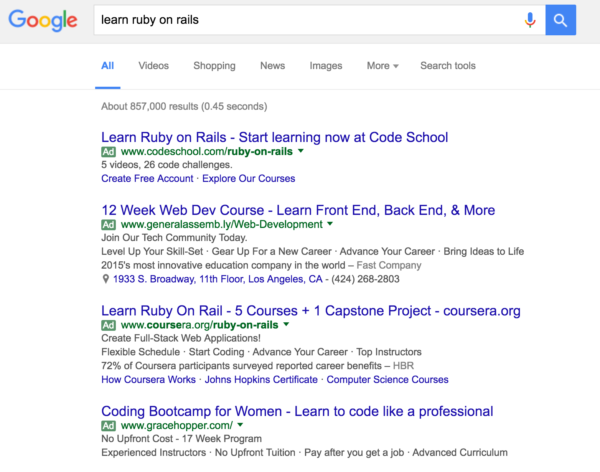
When we take a look at the Coursera landing page, the only CTA here is to enroll. No syllabus or guide, and you have to create an account right away:
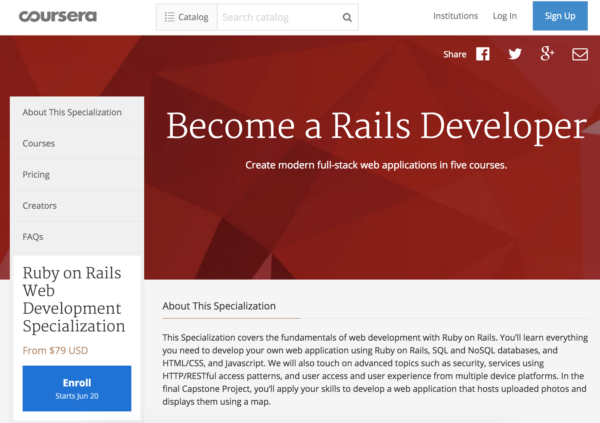
So as you can see, you can effectively increase the amount of keywords you’re bidding on. But only (and this is vital), if you’re able to match the conversion intent of the keyword with the CTA/offer you’re using.
Are You A Master Plumber?
Okay, so now you understand what multi intent keywords are and how they’re used. It all comes down to knowing the PPC traffic temperatures that differ on the search network between different keywords.
Once you’re able to successfully generate conversions between the different multi intent keywords, the next step is to be able to make money off of those conversions.
Depending on how far back the conversions are on the “keyword intent scale” start, the longer it might take you to nurture them into actual dollars.
To speed that up, you have the options of using different types of retargeting campaigns, email nurture campaigns, and upsell offers to continually add relevant value to the people who entered your funnels.
This means that you need to carefully consider the backend “plumbing” of your multi intent keyword conversions so that nothing slips through the cracks and that you’re able to turn weak intent conversions into money that’s actually being made.
Next Steps…
Start to think of the keywords that people might be searching before they search for your current keywords.
Then see how many steps back you can take until the keywords you come up with are no longer relevant to your industry.
Once you do that, do the same thing with your call to actions/offers.
How much can you continue to lower the threat of your CTA, so you can match those CTAs with the lower intent keywords?
Let me know in the comments below :)
